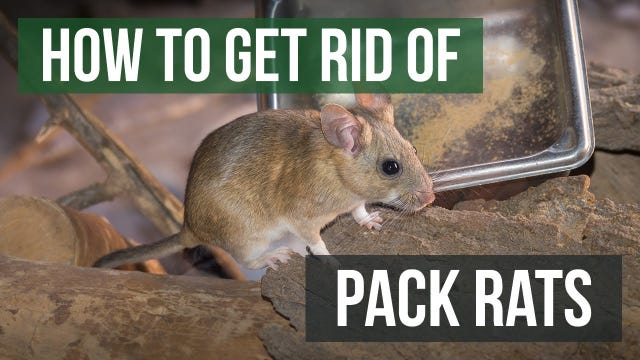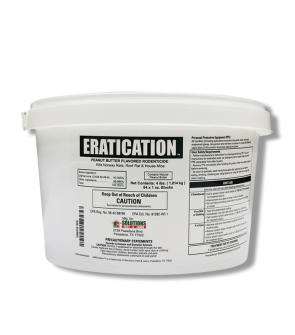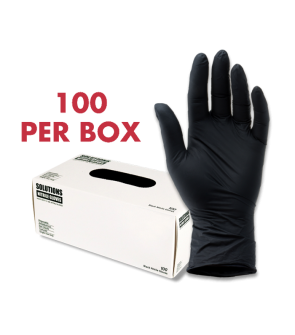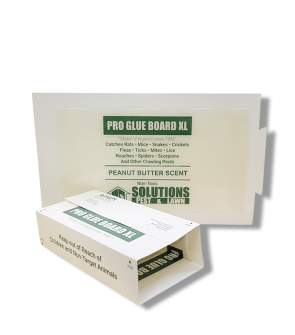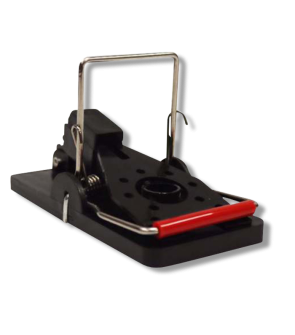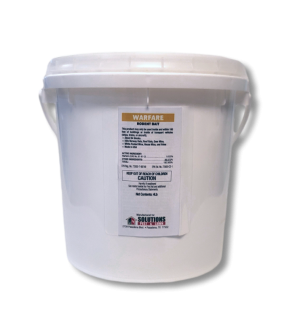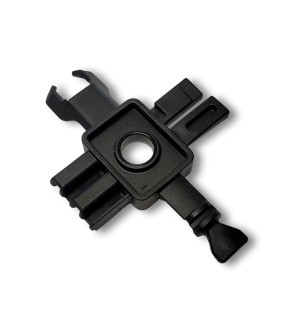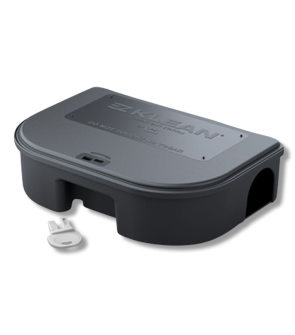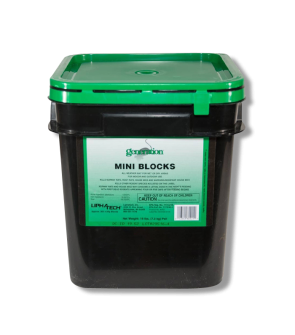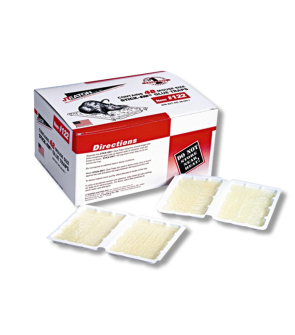Gain access to personalized product screening, the best pricing, rewards, and more!
Most Effective Products
How to Get Rid of Pack Rats
This page is a general pack rat control guide. You can control pack rats on your property using the recommended products and methods. Follow this guide and use the recommended products; we guarantee 100% control of pack rats.
While the term "pack rats" is commonly used to describe someone you know who hordes excessive amounts of clothes and household items they don't need, there is a species of rodent known as pack rats that can cause problems when they invade homes.
Pack rats are the common name for white-throated wood rats distributed across different country regions. While they may look cute with their bushy tails, they can be a destructive presence due to their relentless chewing habit. To keep their teeth sharp, they chew on everything—from cable wiring, irrigation tubes, hot tubs, air conditioning units, and car seats to garage and even swimming pool equipment.
A single female pack rat can produce two babies every two months, and the female baby can, in turn, start reproducing in about 2 months as well. This can lead to a big increase in population in a very short time. Pack rats also crank out a lot of urine and fecal pellets, and your home can start smelling like a public restroom in no time.
If you are suffering from an infestation of pack rats, follow our DIY guide below. We will share a little about these common rodents and how to control them best using our expert techniques and professional rodent control products.
Identification
Identifying pack rats is an important step in the control process. All rodents have slightly different habits and preferences, so knowing that you have a pack rat over a different rat type can help you with the treatment approach.
- Pack rats are properly known as wood rats. They get this name because their native habitat is forestry and brushy areas of the wilderness. However, these rodents are not limited to the woods; they can also survive in deserts, humid regions, and mountainous areas.
- Pack rats have grey or reddish-brown colored fur but have white on their feet and undersides. They have big ears and bushy tails, which differs from their appearance regarding the roof and Norway rats.
- Pack rats can reach between 12 to 15 inches long when measured along with their tail.
- Pack rats live primarily in dens 3 feet tall and 5 feet in diameter. These dens are made of twigs, sticks, grasses, and other debris.
Use the description and image above to help you properly identify pack rats. If you are not entirely sure, contact us, and we will have one of our pros assist you with correct identification.
Inspection
Once you have identified pack rats, you must inspect them to find out where they gather, are active, and are hiding. Doing so lets you pinpoint your treatment to these specific areas for effective elimination.
Where to Inspect
Pack rats have similar habits to your typical rat in that they invade an area for three simple needs: food, water, and shelter. If you have one, you may find them active around your garden, and they may invade your home in the wintertime for warmth. Search your basement, attics, patios, and garages for these damaging rats.
What to Look For
Look for the pack rats themselves or signs of damage. Some notable signs include chew marks on wires and walls. Another clear sign of activity is any fecal droppings they have left behind.
Pack rats are known for gathering many materials, like shiny objects, spoons, jewelry, and other objects that attract them, and packing them away in their nests. You may have located their nest if you see these items piled up in any tight corner.
Treatment
Once you have noted where the pack rats are most active, you can proceed with treatment. We recommend setting traps, either or both glue traps or snap traps, as well as general clean-up, to overcome this pest invasion and stop their population growth.
Wear the proper personal protective equipment (PPE) before handling or applying the product.
Step 1: Sanitation and Decluttering
The first and foremost method to keep pack rats away is prioritizing sanitation. Keeping your home clean and disposing of trash properly will make your home less appealing to reside in. Toss trash properly and keep them sealed in tight containers. Outdoors, remove leaf litter and yard debris as much as possible.
Sweep the floors to remove food crumbs after every meal. Do not leave dirty dishes overnight; rats love to feast on leftovers. Refrigerate all leftovers and never leave them in the open.
If you have leaks under the sink or anywhere in the house, fix them. Rats want continuous access to water, and if they are denied, they will want to migrate. Declutter by recycling your old newspapers, cardboard boxes, and other boxes regularly. Rats love to burrow in these cozy areas.
Step 2: Set Up Traps
Like all other rodents, pack rats can be caught easily with traps. To increase the likelihood of capture, we recommend using both snap traps, like the Solutions Easy Set Rat/Mouse Trap, and glue traps, like the Solutions Pro Glue Trays.
Trapping is a better option over rodenticide baits because pack rats may tend to horde the blocks rather than eat them, making effective control take longer than desired.
To ensure that your snap trap treatment is effective, what you will need to do is what we call pre-bait. This means we place baited traps without setting them. This is done because rats usually avoid new or unfamiliar objects.
The rats become comfortable with it and its food source by baiting the trap without setting it. This also allows the trap to be monitored if they are taking the bait so that we know that the trap's placement is in a good spot.
Be sure to set traps where kids and pets can’t reach and where rats have been most active. Place the traps around your kitchen and attic. Outdoors, place them around the edges of your home. Leave the bait in the traps at night to see results in the morning.
Solutions Pro Glue Trays are poison-free and peanut butter-scented, which will attract rodents to the trap. Glue boards are an easy product to use. Remove them from the packaging, pull the two apart, and place them strategically in corners of the attic or other areas where you have noticed pack rat activity.
Most households may need about 12 of each trap to control the pack rat invasion effectively. Be sure to set traps about 5 to 10 feet away from each other wherever you have noted Pack Rat hot spots.
Prevention
Once you have eliminated a pack rat infestation, you want to make sure they don't make a comeback with preventative measures and exclusion. Pack rats are tiny little creatures who can squeeze their way in from any entry, no matter how small.
- Get out your caulk and seal all cracks and holes you come across.
- Seal all entry points where pests may be entering. Make sure all openings, such as electric wires, drain spouts, water pipes, and vents, are sealed. Look for vents in the attic and seal them shut.
- A helpful tool when performing exclusion is the Stuf-Fit Copper Mesh. Rats can chew through many materials, but they cannot chew through copper. This product will ensure that even if rats successfully remove your sealant, they cannot enter your home. After placing copper mesh in your holes, seal them with caulk.
- Pack rats are climbers and nibblers, so they will use any entry they find into your home. If your doors and windows do not shut properly, get them fixed. If you see any holes around your home's foundation, get that fixed, too.
Key Takeaways
What are Pack Rats?
- Pack rats are wood rats that commonly invade homes in the winter in search of warmth. Their relentless chewing habits can cause extensive damage and destruction.
How To Get Rid of Pack Rats
- To eliminate pack rats, trapping is the best method of control.
- Use the Solutions Pro Glue Trays and Solutions Easy Set Rat/Mouse Trap and place them around your property in 5 to 10-foot intervals.
Preventing Rat Pack Reinfestations
- Prevent future pack rat infestations with exclusion measures such as placing Stuf-Fit Copper Mesh in openings and points of entry.






